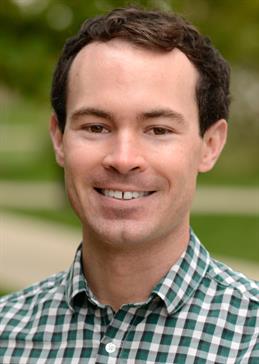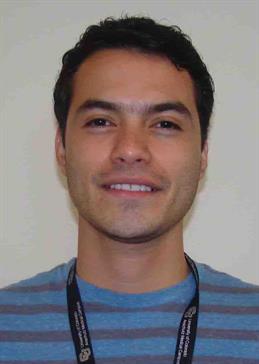2017 – 2018 RNA Scholars

Maggie Balas
Project Title: Long noncoding RNAs in heterochromatin establishment and maintenance
Program: Molecular Biology
Mentor: Aaron Johnson
I am investigating the mechanism by which long noncoding RNAs (lncRNAs) influence the establishment and maintenance of heterochromatin. Long noncoding RNAs have recently been shown to regulate gene expression via their interactions with chromatin modifiers. However, the mechanism of how lnRNAs are targeted to specific genetic loci remains unclear. Importantly, lncRNAs are highly dysregulated in many human diseases, including neurodegeneration and cancer. My research into the lncRNA HOTAIR has provided insight into how lncRNAs are recruited to specific gene targets through a matchmaker model. We will provide a detailed understanding of lncRNA mechanism and expand our knowledge of gene regulatory systems and their influence on abnormal chromatin state. Furthermore, by understanding lncRNA mechanism in detail, we hope to learn how dysregulation of these molecules influence disease, such as cancer.

Patrick Cherry
Project Title: RNA processing regulates the unfolded protein response
Program: Molecular Biology
Mentor: Jay Hesselberth
My research focuses on conserved processes in RNA decay. I have found that RNA modification events are required for controlling the Unfolded Protein Response, a highly conserved homeostatic signaling pathway strongly linked to many diseases. Using a novel genetic tool to bypass essential RNA repair genes in budding yeast, I have preliminary results indicating that the endoribonuclease that activates the UPR, Ire1, cleaves its substrate mRNA sequentially, generating two new points of regulation. Contrary to the dogma of the field, these results support these two cleavage steps as decision points, where the UPR can be activated or suppressed. Until now, cleavage by Ire1 was thought to be the single point of regulating the UPR. I am exploiting budding yeast’s unique method for ligating RNA to explore these mechanisms of activating or suppressing the UPR.

Michael Cortazar Osorio
Project Title: Regulation of premature Pol II transcriptional termination
Program: Molecular Biology
Mentor: David Bentley
My project has aims to understand how RNA biogenesis is regulated in mammalian cells, focusing on the still open question of whether or not a growing, nascent RNA transcript can be prematurely destroyed to control the transcription process and ultimately, regulate gene expression. I have successfully been able to analyze RNA biogenesis from different angles via the implementation of a variety of deep sequencing techniques such as Bromouridine Sequencing (BrUseq), Chromatin Immunoprecipitation (ChIP-Seq), DNA-RNA Immunoprecipitation (DRIP-Seq), and also developed a novel technique that allows for mapping of 5’-monophosphorylated ends of nascent RNA transcripts genome-wide. This approach has allowed, for the first time, visualization of the 5’-monophosphorylated end of nascent transcripts at the cleavage and polyadenylation site of genes in vivo; proposed to be generated and required according to the torpedo model for termination of pol II. Interestingly, this method has uncovered nascent transcripts that are 5’-monophosphorylated around promoter regions that are targets of the termination factor Xrn2. These observations are very intriguing since nascent transcripts are normally provided with a cap structure at 5’-ends that protects them from degradation. The fact that Xrn2 targets this transcripts, suggest that premature termination of transcription takes place on human promoters and have opened more interesting questions to solve.